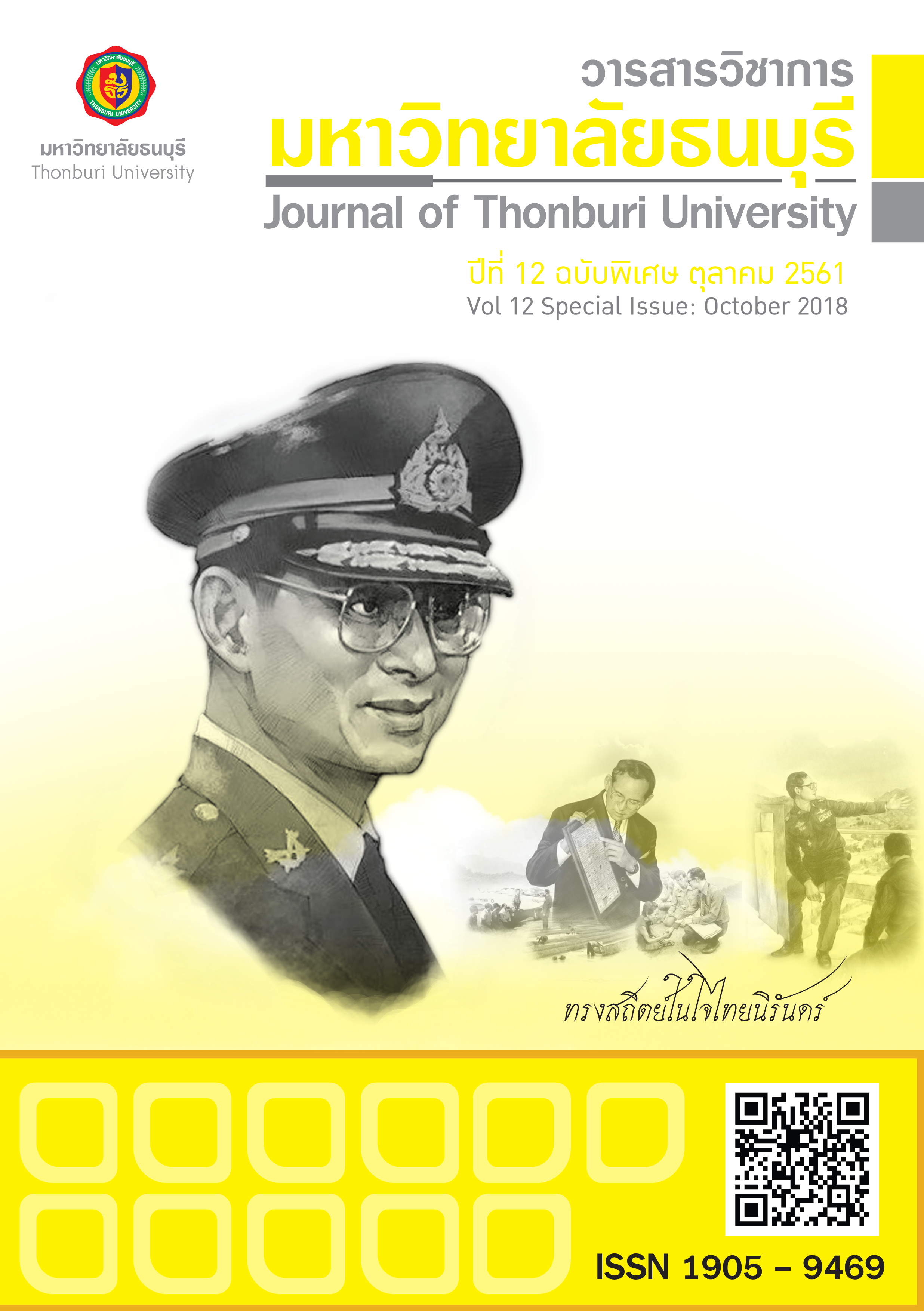MODERN HUMAN CAPITAL MANAGEMENT IN OPERATIONAL LEVEL OF GENERRATION Y: A CASE STUDY AT NORTHERN REGION INDUSTRIAL ESTATE LAMPHUN
Main Article Content
Abstract
Abstract
The purposes of this research are to 1) analyze the influence of motivation factors which include the motivating and Hygiene factors, related to the operational behaviors, and the interests in the work and the organization and 2) develop a model of the relationships between motivation factors and the operational behaviors, and the interests in the work and the organization of operational level, in the Generation Y, in the Northern Region Industrial Estate of Lamphun. The study is done by simple random search of model group of people consisted of 410 selected Y-generation employees of Northern Region Industrial Estate of Lamphun. The questionnaires were analyzed using LISREL. Two types of data analysis have been performed which are descriptive and SEM.
The result showed that the motivation factors have direct positive influence on operational behaviors and the hygiene factors have direct positive influence on the interest of working and in the organization, with the significant level at 0.01. The research findings indicate that the modified human resource management policies based on the relationship model in the continuation of future plan for the operational level of Y’s Generation employees, must aim to provide the various motivative activities. Having behavior in the right direction should focus on motivation factors. Motivation to have an interest in working and in the organization, should focus on hygiene factors such as a reasonable salary and benefits, a job security and a good relationship with colleagues and supervisors.
Keywords: Operational Behaviors, Human Capital Management, Y-generation Employees, Hygiene Factors, Motivating Factors
Article Details
References
ชัชชัย พันธุ์เกตุ. (2559). การบริหารทรัพยากรมนุษย์ในยุคการแข่งขัน. สืบค้นเมื่อ 2 กรกฎาคม 2559, จาก www.hu.ac.th/academic/article/HR/chatchai.htm
ชูเกียรติ ยิ้มพวง. (2554). แรงจูงใจที่มีผลต่อการปฏิบัติงาน กรณีศึกษา บริษัท บางกอกกล๊าส จำกัด โรงงานจังหวัดปทุมธานี. บริหารธุรกิจมหาบัณฑิต, มหาวิทยาลัยเทคโนโลยีราชมงคลธัญบุรี
ปิยะวัฒน์ จารุธนรัตน์กุล. (2559). ทุนมนุษย์. สืบค้นเมื่อ 8 สิงหาคม 2559, จาก www.thaihrm.com/articledetail. asp?id=2974
รัชฎา อสิสนธิสกุล. (2559). แนวคิดด้านการบริหารทรัพยากรมนุษย์ยุคใหม่: คอลัมน์ HR Conner. สืบค้นเมื่อ 9 มิถุนายน2559, www.gotoknow.org/posts/267913
สถาบันเอ็นเทรนนิ่ง. (ม.ป.ป.). คน Gen Y คืออะไร ทำไมองค์กรต่าง ๆ ควรต้องเจียระไนคน Gen Y? สืบค้นเมื่อ 15 กรกฎาคม 2559, www.entraining.net/article-paradorn_gen- y.php
สุรัสวดี สุวรรณเวช. (2549). ความผูกพันต่อองค์การของพนักงาน. วารสารการบริหารสำหรับนักบริหารงานบุคคลมืออาชีพ. 27(3): 30-31.
Albanese Robert. (1981). Managing: Toward accountability for performance. 3rd edn. Homewood, IL: Richard D. Irwin.
Becker Gary S. (1994). Human Capital. Chicago: University of Chicago Press.
Ferreira, Teresa Santos. (2017). Motivational factors in sales team management and their influence on individual performance. Tourism & Management Studies. 13(1): 60-65.
Herzberg Frederick, Mausner Bernard and Snyderman Bloch Barbara. (1959). The motivation to work. New York: John Wiley & Sons.
Maka, Brenda L. and Sockelb, Hy. (1999). A confirmatory factor analysis of IS employee motivation and retention. Journal of Information & Management. 38(2001): 256-276.
McShane Steven and Von Glinow Mary Ann. (2004). MARS Model of Individual Behavior and Results Organizational Behavior. 7thed. New York: McGraw-Hill.
Robbins Stephen P. (1993). Organizational Behavior : Concepts Controversies and Applications. New York : Prentice–Hall Inc.
Strauss William and Howe Neil. (1992). Generations: The History of America's Future, 1584 to 2069. London: HarperCollins.
Vance, Robert J. (2006). Engagement and Commitment: A Guide to Understanding, Measuring and Increasing Engagement in Your Organization . Duke Street, Alexandria: SHRM Foundation Press.
Translated Thai References
Asisonthisakul, R. (2016). Modern Human Resource Management Concept: HR Conner column. Retrieved June 9, 2516, from www.gotoknow.org/posts/267913 (in Thai).
Charuthanaratkul, P. (2016). Human Capital. Retrieved August 8, 2516, from www.hu.ac.th/academic/ article/ HR/chatchai.htm (in Thai).
Entraining Institution. (n.d.). What is Gen Y? Why should organizations retouch the Gen Y? Retrieved July 15, 2516, from www.entraining.net/article-paradorn_gen- y.php (in Thai).
Krajangsaeng, Kanokporn and Jadesadaiug, Viroj. (2017). The Influence of The Motivation to work and Organization Support That Affect The Quality of Performance Through Organization Commitment of The Personnel Nakornthon Hospital. Journal of Thonburi University. 11(26): 116-129. (in Thai).
Panket, C. (2016). Human resource management in the Social Enterprises in the competitive era. Retrieved July 2, 2016, from www.hu.ac.th/academic/article/HR/chatchai.htm (in Thai).
Suwanwech, Suratsawadee. (2006). Employee Engagement. Journal of Management for Professional Personnel Management. 27(3): 30-31. (in Thai).
Yimpuang, C. (2011). Motivational factors affecting operation : Case study of Bangkok glass Co.,ltd Pathumthani plant. (Master of Business Administration Independent Study, Rajamangala University of Technology Thanyaburi). (in Thai).

